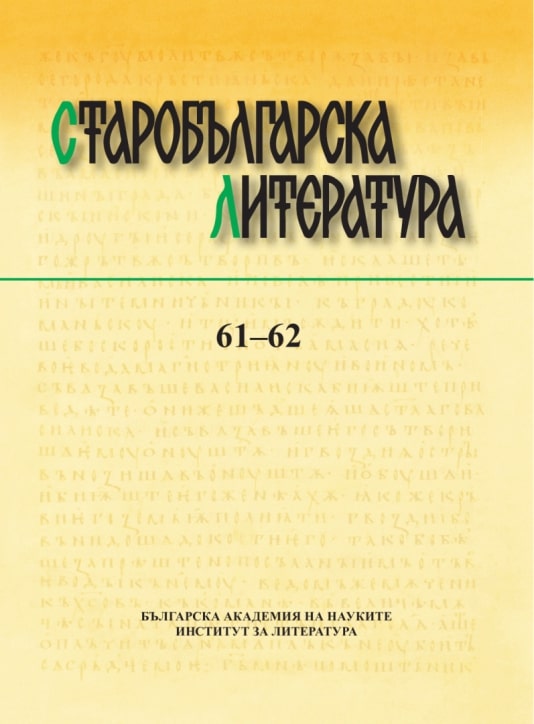Загребският пролог като представител на втората южнославянска редакция на Простия пролог
The Zagreb Synaxarion (Zagrebski Prolog) as a Representative of the Second South Slavic Redaction of the Synaxarion (Prost Prolog)
Author(s): Iskra Hristova-ShomovaSubject(s): Christian Theology and Religion, History, Language studies, Language and Literature Studies, Cultural history, Studies of Literature, Middle Ages, Theology and Religion, Translation Studies
Published by: Институт за литература - БАН
Keywords: Synaxarium; manuscripts; translations; redactions
Summary/Abstract: South Slavic manuscripts of the Synaxarion (Prost Prolog) had already been divided into two groups by Vladimir Mošin, but it was Lyudmila Prokopenko who registered the existence of two different textual South Slavic redactions. So far, the Second South Slavic redaction has not been studied in detail. This article is an attempt to characterize it on the base of the Zagreb Synaxarion (Zagrebski Prolog). Eight texts from the Zagreb Synaxarion are published and compared to the corresponding texts in the Sofiyski Prolog and the Lesnovski Prolog. For four of these texts parallels are provided also from the manuscript Wuk 37 (Berlin Staatsbibliothek), another exemplar of the second South Slavic redaction. In all cases, the comparison reveals considerable differences between the redactions. Sometimes there is exchange of synonyms, in other cases the same idea is expressed by two different phrases, so it seems that there are two different translations from similar sources. Occasionally, the text in the second redaction is much longer than the text in the first redaction, the second including episodes missing from the first. A question arises: Are we dealing with two redactions or with two different translations? The author is inclined to support the idea that these are two redactions based on the same primary text. Тwo reasons support this hypothesis. First, some parts of the texts are identical in the two groups of manuscripts. Second, there are mistakes common for all South Slavic manuscripts of both redactions. This means that the South Slavic manuscripts are secondary to the East Slavic ones and that all South Slavic manuscripts come from one Old Russian manuscript that already featured the corresponding errors.
Journal: Старобългарска литература
- Issue Year: 2020
- Issue No: 61-62
- Page Range: 197-224
- Page Count: 28
- Language: Bulgarian, Old Slavonic, Old Bulgarian
- Content File-PDF

